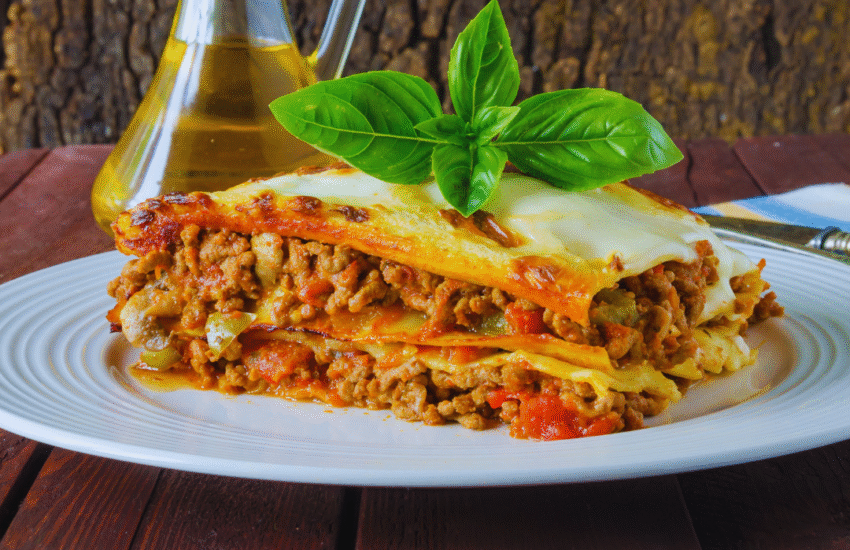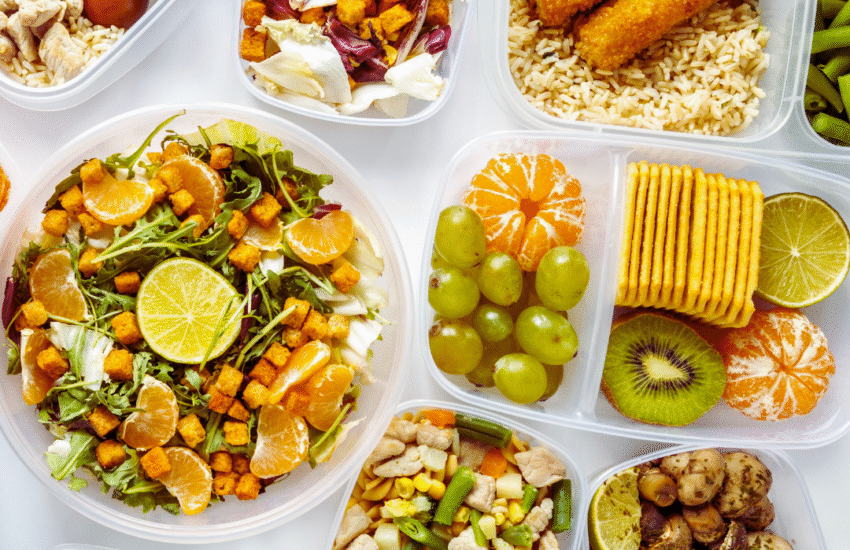Traditional Recipes with a Modern Twist: Revamping Classics for Today’s Palate
Traditional recipes hold a cherished place in many cultures, often passed down through generations. Yet, as food trends evolve, there is room to breathe new life into these classics. By incorporating modern techniques and ingredients, it is possible to create dishes that honour the past while appealing to contemporary tastes.
Exploring recipes that fuse traditional elements with innovative twists can enhance both flavour and presentation. This approach not only preserves culinary heritage but also invites creativity in the kitchen. From health-conscious adaptations to unexpected flavour combinations, the possibilities are endless.
In this article, readers will discover how to transform beloved recipes into exciting new experiences. Engaging with familiar dishes in fresh ways encourages exploration and experimentation, making cooking a delightful journey rather than a chore.
Reinventing Classic Flavours: The Essence of Traditional Recipes with a Modern Twist
Modern interpretations of traditional recipes focus on creatively incorporating diverse ingredients while maintaining their core flavours. This approach keeps the essence of classic dishes intact while appealing to contemporary palates.
Key Ingredients Elevating Classic Dishes
Innovative recipes often introduce unexpected ingredients that enhance traditional meals. For instance, incorporating beetroot can add depth to dishes like borscht or salads, lending a natural sweetness and vibrant colour. Similarly, the inclusion of ginger can give a fresh kick to soups and marinades, providing a modern feel while respecting classic roots.
Lemon juice serves as a versatile element, brightening up flavours in desserts such as lemon meringue pie or citrus-based dressings. The addition of fresh herbs, like dill or mint, can also uplift traditional recipes, creating a fusion of old and new yang to cater to modern tastes.
Balancing Authenticity with Innovation
Maintaining authenticity in traditional recipes while adding a modern twist requires careful consideration. It is essential to stay true to the foundational flavours while integrating contemporary cooking techniques. For example, opting for baking techniques such as sous-vide or fermentation can transform classic meats into succulent, flavour-packed dishes without losing the original essence.
Furthermore, chefs can use textural contrasts to modernise recipes. A classic shepherd’s pie can feature a smooth cauliflower mash instead of traditional potato topping, offering a lighter, contemporary alternative while still paying homage to the original dish.
Exploring Regional Influences and Cultural Heritage
Cultural heritage plays a significant role in reinventing traditional recipes. Exploring regional influences can lead to exciting combinations. A British cottage pie might adopt Italian influences by incorporating celery for added texture or a rich tomato base, creating a delightful interplay of flavours and backgrounds.
Modern twists often draw inspiration from global cuisine. For instance, a traditional curry could introduce a new spice blend or vegetables, inspired by other cultures, making it unique while retaining its warming essence. This blending of culinary traditions allows for creativity while holding true to the original dish’s roots.
Showcasing Innovative Starters and Mains
This section focuses on modern interpretations of classic starters and main courses, emphasising flavour combinations and unique presentations. The use of familiar ingredients in inventive ways brings excitement to traditional dining.
Contemporary Updates of Popular Starters
Classic starters, such as soups and dips, can benefit from fresh twists. For example, a traditional hummus can be elevated by incorporating charred red onion and cumin for a smoky flavour.
Another innovative starter is the spiced chorizo and roasted garlic flatbread. The heat from red chilli paired with the rich, savoury notes of chorizo makes for a compelling dish.
Mint leaves can be added to classic tzatziki, giving a refreshing quality that modern palates appreciate. Enhancing textures through toppings like toasted black pepper adds crunch and depth.
Creative Main Courses with Unexpected Flavour Combinations
Main courses can also surprise with inventive pairings. A modern take on chicken curry can include a blend of coriander and fresh mint, which brightens the dish and adds complexity.
Alternatively, grilled chicken marinated in a garlic and cumin rub, served with a side of sautéed vegetables, showcases classic flavours in a refined way.
Chorizo-stuffed bell peppers provide a vibrant dish packed with protein. Combining red onion and spices brings depth to the stuffing, enhancing the overall experience. The use of rich chicken stock in a sauce can tie these elements together, creating a satisfying and flavourful presentation.
Modernising Traditional Breads and Desserts
Many traditional breads and desserts can be revitalised with modern ingredients and techniques. This exploration highlights innovative takes on soda bread and classic desserts, as well as the creative use of nuts and fruits in sweet dishes.
Innovative Soda Bread Interpretations
Soda bread, a staple in Irish cuisine, can be enhanced with diverse flavours. Darina Allen, a renowned advocate for Irish cooking, promotes variations that incorporate ingredients like chopped pistachios or dried fruits.
One modern twist features using pomegranate seeds for a burst of tartness, adding colour and texture. Alternatively, infusing the dough with saffron provides a unique aroma and golden hue. For added depth, a sprinkle of paprika can introduce a subtle warmth. Adjustments to traditional recipes can cater to various dietary needs while keeping the essence of this beloved bread alive.
Classic Desserts with Contemporary Elements
Traditional desserts receive a refreshing makeover with modern flavours and presentation. For instance, classic bread pudding can be elevated by incorporating coconut milk instead of regular milk. This not only adds a tropical note but also caters to dairy-free diets.
Incorporating spices like cardamom or cinnamon can also elevate traditional recipes, providing a warm, inviting taste. Modern plating techniques, such as serving dessert in elegant glassware with layers of ingredients, enhance visual appeal. Desserts that combine favourite flavours like dark chocolate with hints of sea salt or spicy notes create an intriguing flavour profile.
Creative Use of Nuts and Fruits in Sweets
Nuts and fruits can transform traditional sweets into exciting flavour combinations. Pistachios, for instance, lend a vibrant colour and rich texture, making them perfect for toppings on cakes or as a key ingredient in cookies.
Incorporating seasonal fruits like pomegranates adds unexpected sweetness and crunch. Fusing fruits into the batter of muffins or cakes not only imparts moisture but also introduces nutritional benefits. Lastly, creating desserts that feature coconut in various forms—such as shredded, milk, or cream—can yield distinctive results that reflect a modern palate while honouring traditional roots.
Practical Tips for Cooking and Preparation
Efficient preparation and modern techniques can enhance traditional recipes without losing their essence. By managing cooking and preparation times, and incorporating innovative methods, one can achieve both flavour and convenience in the kitchen.
Managing Cooking and Preparation Time Efficiently
To streamline cooking time, create a detailed timetable for preparation and cooking. Begin by listing ingredients and arranging them according to their preparation requirements. This reduces the likelihood of forgetting items.
Batch preparation is a useful strategy. For instance, chopping vegetables for multiple recipes at once saves time.
Using time-saving tools such as food processors can also speed up tasks. Additionally, keeping a close eye on cooking times prevents overcooking and ensures that each dish retains its traditional qualities.
Incorporating Modern Techniques for Traditional Results
Incorporating modern techniques can elevate traditional recipes. Techniques like sous-vide allow for precise temperature control, resulting in perfectly cooked meats without effort.
Another method is pressure cooking, which significantly reduces cooking time while maintaining flavour. This is particularly effective for dishes that traditionally require long simmering.
Experimenting with modern ingredients, such as alternative flours or sweeteners, can introduce new textures and flavours. For instance, using almond flour in traditional baked goods can add a unique nutty flavour while catering to different dietary preferences.
Being open to these methods can enrich the cooking experience while staying true to the heritage of the recipe.



